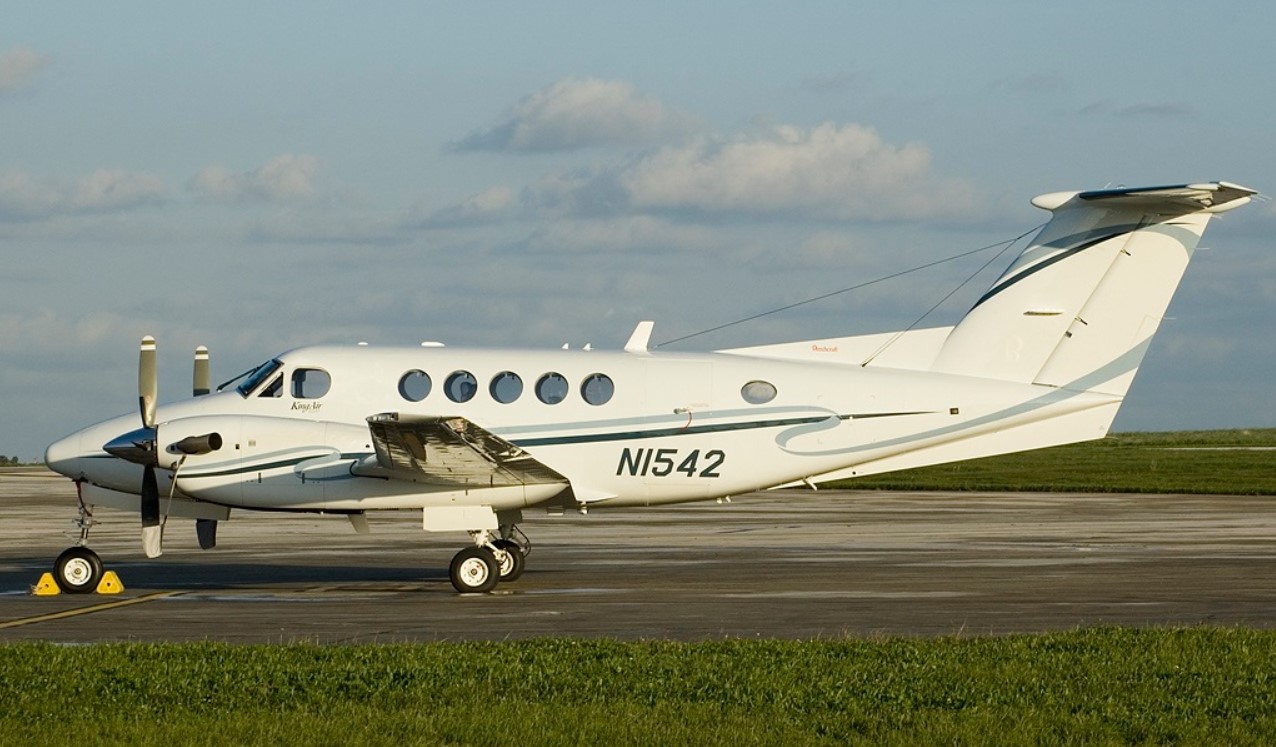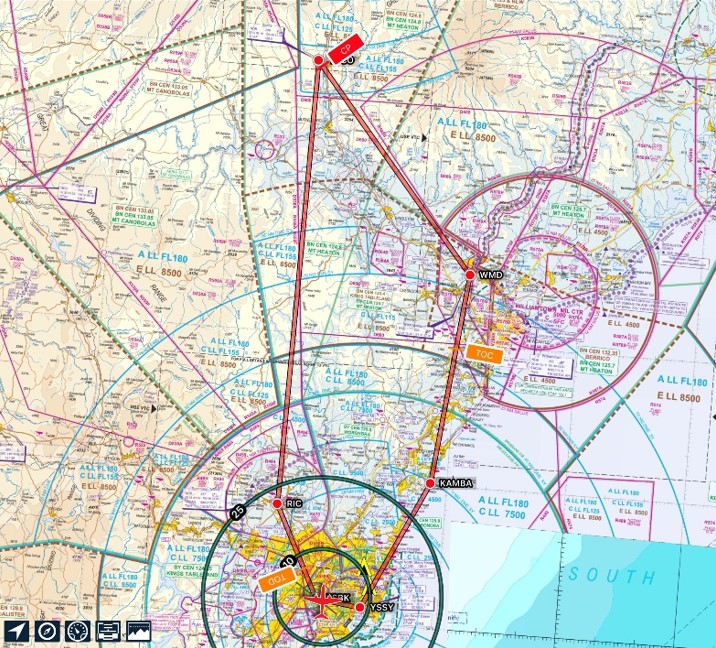survival of the fittest
survival of the fittest
2nd december, 2006
kingair N1542
Over a period of 30 years we had looked after three brand new kingairs (in sequence) on behalf of a US company that had pastoral interests. We had a Friday and Sunday milkrun. In the early days the grandchildren of the owner of the kingair used to be picked up and go back and forth between school in Sydney and Scone where the family lived. As the two boys grew up the flights might change a bit depending on their various acitivities. The other flights throughout the year were flying the owner or manager between the variouus pastoral interests that they had in New South Wales.
This particular flight on 2 December 2006, in kingair N1542, was to fly to Sydney, pick up the two boys then fly to Scone, pick up some other people and fly to a property near Wagga Wagga. Times were changing. On this particular flight the boys had their girlfirends with them. My co-pilot on this occasion was Ian Meggit who ran the radios and variously helped. The weather forecast was for expected thunderstorms en route. Operations normal really for a flight conducted under instrument flight rules (IFR).on the East Coast of Australia in summer.
The flight plan was to fly from Sydney to Scone via waypoints Kamba and West Maitland at Flight Level 200.


This route also put us in line for a straight in apporach using the runway 29 GPS approach at Scone. The flight time to Scone was in the vicinity of 30 minutes. We departed off runway 34 right at Sydney and probably entered cloud around 12-15,000 feet. The radar was indicating that there were thunderstorms towards Maitland. We requested to fly right of track. We were given the freedom to deviate around the weather and return to track under under cover of sydney radar. On levelling out at flight level 200 we then returned to the direct track to Scone.
Ian was calculating the descent point when all of a sudden there was a whack. My screen went blank, I looked across to Ian’s screen which was working, then back to mine. My screen returned to normal. We were in a nose down attitude (literally pointing at mother earth) with a 75 degree angle of bank to the left. The airspeed indicator was showing a constant descent speed of 240 kts which I thought was odd. Pointing at mother earth my thoughts were that the speed should be winding up. The vertical speed indicator was off the clock and the alitimter from memory was aproaching 15,000 feet..
I immediately cut the power to zero, rotated the wings level with the rudders only and very very gently and smoothly raised the nose to regain altitude. I think we passed through FL 200 on the way back up, before rectifying the situation and returning to FL200.
One of the boys came and talked to us as we proceeded to descend into Scone. Understandably he wanted to know what was going on. I Was not much help really. Upon landing, there was much discussion as to what had happened. I had no idea, Ian had no idea although he thought we may have been caught in the edge of a thunderstorm, but we were just as bemused as the passnegers. All I knew was that the aircraft was in one piece and in my view OK, as the recovery had been very gentle.
On the ground at Scone the discussion revolved arount whether we should onwards to Wagga. But bofore making any decisions I found a pilot engineer on the airport that I knew and I asked him to walk around the aircraft with me and see whether he could find any rivets out of place, any bending in the fuselage. Even though I say it myself I was not expecting any structural problems as I had been super gentle in fixing the whole situation. He could not find anything along the fuselage or up and down the vertical fin.. As to continuing the flight on to Wagga one boy said he was happy to go to Wagga if I said it was OK, the other boy said no he was not going anywhere. After a committee meeting we opted to cancel the rest of the flight and return to Sydney. I gave much thought as to whether I should ground the aircraft at Scone but decided not to due to the gentleness of the recovery.
On return to the office Richard Katsch our thrid kingair pilot and computer guru, searched through all the data in the kingair computer that he could lay his hands on. He found nothing that would tell us what had happened. On the Monday morning I towed the kingair up to Hawkers maintenance, told them what had happended. I asked them to give the aircraft a good going over both externally and internally.. They kept the kingair for a week and ran a fine tooth comb over N1542. . They found not a rivett out of place, nor any bend in the airframe. “Job dun good.” I guess ultimately that is what one is paid for.!!
There are three safety organisations that look after Aviation in -Australia. Despite losing 4 to 5000 feet and regaining altitude. There was silence.
That week I started making enquiries through system to see if I could find out what had happened. Meanwhile with the aircraft up in Hawker Maintenance meant that Raytheon (the manufacturer of Kingairs) in the USA wanted to know what happened. Of course you the know the pilot is to blame. A visitiation of 3 aircraft experts came the next morning to the office. Quite frankly they had the audacity to tell me that I had stalled the aircraft.
I looked at them in silence. Then I said. “How do you know?” “How do you decide that with the nose pointing at mother earth, the arispeed doing 240 kts and the Vertical Speed Indicator off the clock – that that represents a stall?”
“It would be nice if you poked around the aircraft systems and helped me find the answers before you tell me that I stalled. You have not asked me one question. You have just stated that I stalled.”
The next day they came back and apoligised” they had forgotten that the wingtips of a kingair have stalling sensors in them which would have alerted me to an impending stall.” “ Thank you” I said “now what else?”. They had nothing else to offer. I could see I was on my own, again.
I rang up Air Traffic next day and asked was there an investigation taking place in relation to the N1542 sudden loss of altitude. They initially said “what incident?” Then their response was changed to: “US registered aircraft, ring up the FAA and ask them to investigate.” What can one say?
The Flying Operations Inspector who looked after Clamback and Hennessy, rang me some weeks later and said “you have been leading an exciting life”. He had seen the kingair in the Hawker hangar and made some of his own inquiries. He told me I had been descending at 15000 feet per minute which gave us about 1 minute to mother earth and killing us all. I asked how he knew this and he told me that every aircraft that departs from Sydney has permanently recorded on radar their rate of climb, their altitudes and rates of descent. The Civil Aviation Safety Authority knew that the aircraft was going down at 15,000 feet per mintue. I said “why is there no investigation”. He said the reason was that I had done the correct thing, taken the aircraft up for a full inspection at Hawkers maintenance and the aircraft had been found to be in perfect order. it could resume flying. What could one say?
We had at our
disposal the Aviation Department of our US owners who set out to help. This led to weeks of useful research. It was
good dealing with them as they were totally professional and wanted to find out
what had happened just as much as I did.
Ray was away
ferrying the Pacific so was on the end of a phone for all this analysis.
The two burning
questions in my mind were pretty simple:
·
What
caused the angle of bank to be 75 degrees to the left and the nose pointing at
mother earth?.
·
Why
did the airspeed not build up above 240kts given our rate of descenct of 15,000
per minute?

The kingair flying
had come to a grinding halt, due no result being forthcoming as to the cause of
the incident..
I had to go to the
USA and meet up with Ray. We were going to bring back two Cessna aircraft.
Our first port of
call was Duane and Mary McNutt at Mojave. They are proprietors of an large avionics
business and Duane was a very
experienced operator.. He asked for a full description of what had
happened. It was the first time I had
put into words exactly what had happened.
I was sitting
there telling Duane all about it including all the instrument indications. He was listening in silence – intently. During the course of telling him my story I
can remember for the first time saying “but
it was so unbelievably noisy going down Duane.”
After a few
minutes of total silence he made sense.
He said “Aminta you were caught in a column of air doing 240kts.” Much
discussion as to what could cause the creation of a column of air doing 240 kts
took place. Ideas came and went, but no
conlucsions.
The next day Ray
and I travelled to Wichita to collect two Cesnna aircraft to ferry them to
Australia. The guy that picked us up
from the airport was the salesman looking after our two aircraft. He was telling us about his flight on the
previous day where he had been flight testing a Cessna Caravan in conjunction
with a gas turbine jet aircraft. For
some reason he wanted to know how a Caravan would react to being caught in a
wake turbulence event.
He said he had deliberately
taken the Caravan up under the right wing of the jet aircraft and flew along 1000
feet below the right wing. He suddenly
got whacked into a nose down left hand descending turn (just like I had
been). He stated that if caught in wake
turbuelnce under the right wing of a gas turbine you would be thrown to the
left with nose pointing downwards. He
had inadvertently answered what had happened to our kingair. We never said a word to the pilot but noted
that we could conclude that we had been too close and under the right wing of a
gas turbine jet aircraf 1000 foot above us.
Upon our return to
Mojave and further discussions with Duane – he agreed that not only did that
make sense but that accounted for the column of air.
We flew back to
Australia via the Pacific with the two cessnas.
It looked like our
kingair days were coming to an end. The
original US owner had died and due to no forthcoming explanation as to what
casued the accident there was a reluctance to fly. The time came when head office in Atlanta
asked for the aircraft to be returned to their base. They could use it there.
Both Ray and I flew
the kingair to Atlanta. When exiting the
aircraft we were met by a welcoming committee of engineers and pilot
managemnt. After saying hullo to
everyone, the Chief Engineer took me aside and said Aminta we have gone through
all the downloaded data in the aircraft and we believe you were caught in wake
turbulence.
Sad day – it was
good-bye to N1542 the last of the three kingairs. We had been so fortuante to look after these
aircraft for this one company. We were very grateful for 35 years of amasing
fun and intresting flying, nice personell, not only around Australia but on two
occasions the kingairs had returned to the USA for extra equipment to be installed.
I lost touch with
the boys and so they never knew what had happended to the aircraft – this is
also the first time that I have written up the full story. Both boys are now young married men and have
returned to live in Australia – I can now tell them what had happened.
Ian Meggit (my
copilot) had written up his side of the event
and was most frustrated that it remained unwanted
Thus ended 35
years of kingair flying.
